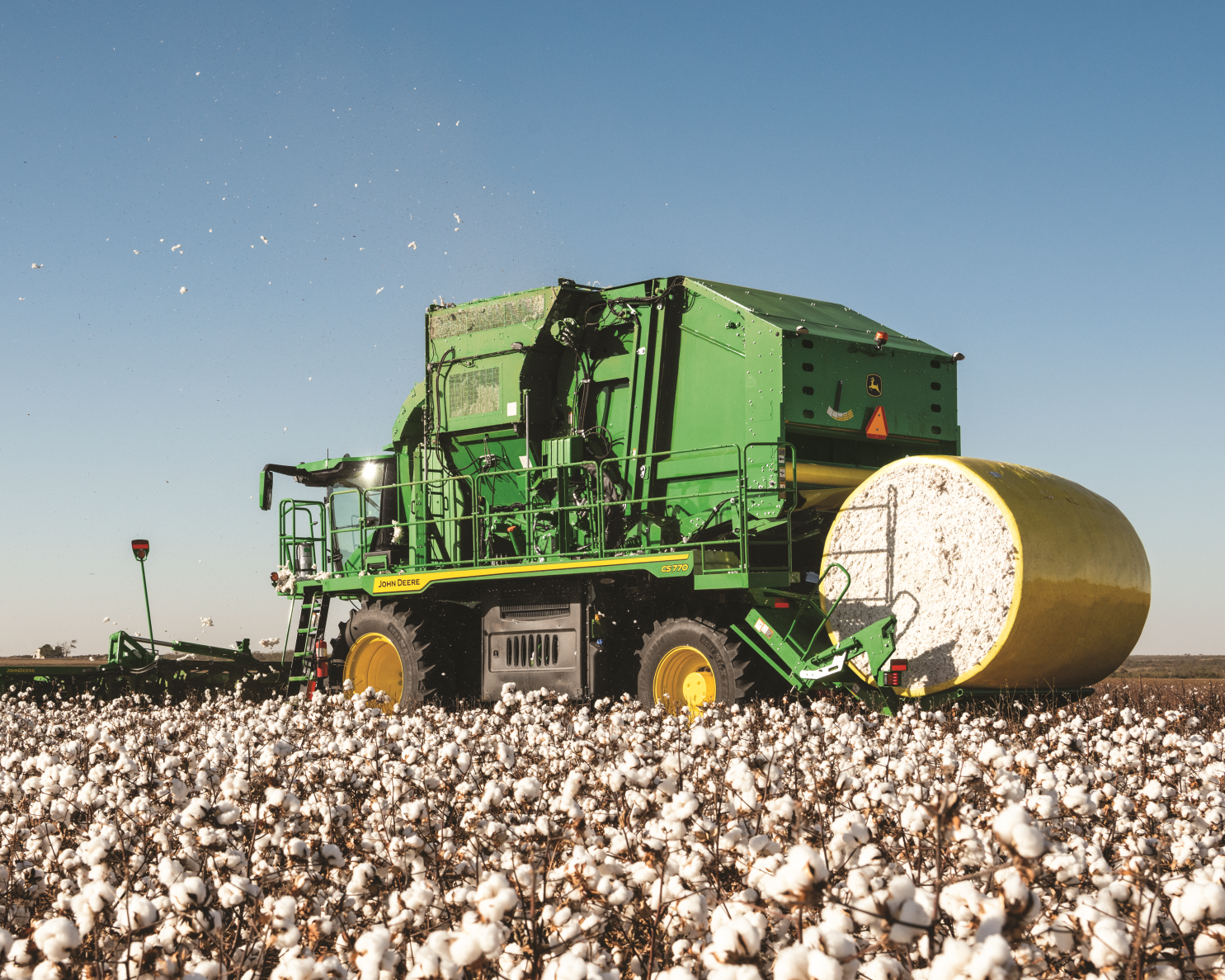Reducing Fire Risk During Harvest
Posted by South Plains Implement
Oct 9, 2024 12:00:00 AM

Environmental conditions play a huge role in determining how smoothly things will go during cotton harvest. Is the weather sunny, dry and warm, or overcast and damp? Is it windy or just breezy? And, how have growing conditions as the crop finished out impacted fiber characteristics?
The last point is important, especially in seasons with low micronaire cotton and excessively dry weather at harvest. Those two points have unfortunately led to an abundance of cotton harvester fires over the past several years. But even under normal conditions, the risk of harvester fires is ever present.
A fire in the field has the potential to cause significant damage and often a total loss to equipment. The fire cannot always be avoided, but with an installed fire suppression system, the equipment damage can be greatly reduced or avoided altogether.
Several aftermarket fire suppression systems are available for John Deere CS690s and CS770S. The cost of these systems is minuscule compared to the value of the equipment, downtime and extra expenses for rental equipment and insurance.
Reducing Fire Risks
Below are a few reminders and tips to help protect equipment before harvest begins:
- Keep up with regular machine maintenance. Inspect bearings daily and replace them if you see signs of overheating or excessive looseness.
- Be alert for rocks, wood or debris that can lodge in the picking units and cause sparks.
- Repair leaks and clean up all fuel and oil spills before cotton lint or trash can mix in. Those mixtures are combustible and hard to control if ignited.
- Clean the machine daily during harvest. Be sure to check and clean out of sight areas like under the engine compartment, under the accumulator and under the conveyor belt.
- Check all fire extinguishers and fire equipment on the machine to make sure they are charged and ready for use, and replace them if they’re not. Be familiar with the chassis fire extinguisher port location.
- Do not unload near electrical wires.
- Do not refuel with the engine running, while smoking or around an open flame.
- Do not use flammable petroleum wetting agents in the moistener system.
- Be aware of wind conditions and direction. Fires are more likely in dry conditions with high winds.
- In the event of a fire, pull straight into the wind so it blows in the face of the driver and keeps smoke and flames away from the cab.
Please note these reminders and tips do not insure protection from a fire, but they do greatly help to decrease the chances for fire.
What to do in case of fire
Below are safety tips should the unfortunate circumstance of a fire happen on your farm:
- Call 911 and alert your local fire department.
- Do not panic. Stop the machine immediately and disengage fans and row units. Immediately point the machine into the wind and turn off the engine at the first sign of trouble. Signs of trouble include a scorched smell, an unusual sound, or the sight of smoke or a flame.
- Check the engine for hot spots, starting with the accumulator, picking units, then the engine and chassis. After determining the location and which type of fire you have, extinguish the fire using the correct procedure and fire extinguishers. Always spray extinguisher solution at the base of the fire.
- Remember panels may be hot when handled. Use caution and wear gloves.
- Make sure there is no smoldering cotton that could re-ignite.
Fires belong in your backyard on a cool fall evening, not in your cotton picker. Fire prevention is possible; it just requires some regular maintenance and keeping equipment clean. If you have questions about how to handle fires on your John Deere CS690 or CS770 or would like us to inspect your equipment before you start with harvest, our team at South Plains Implement is here to help you!

